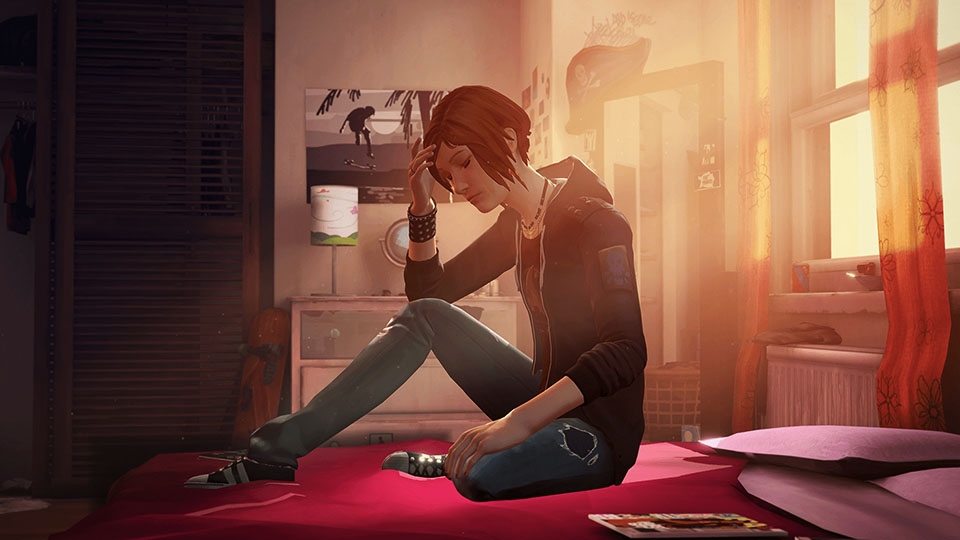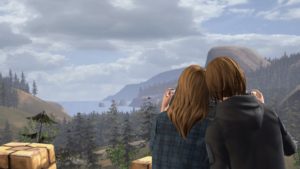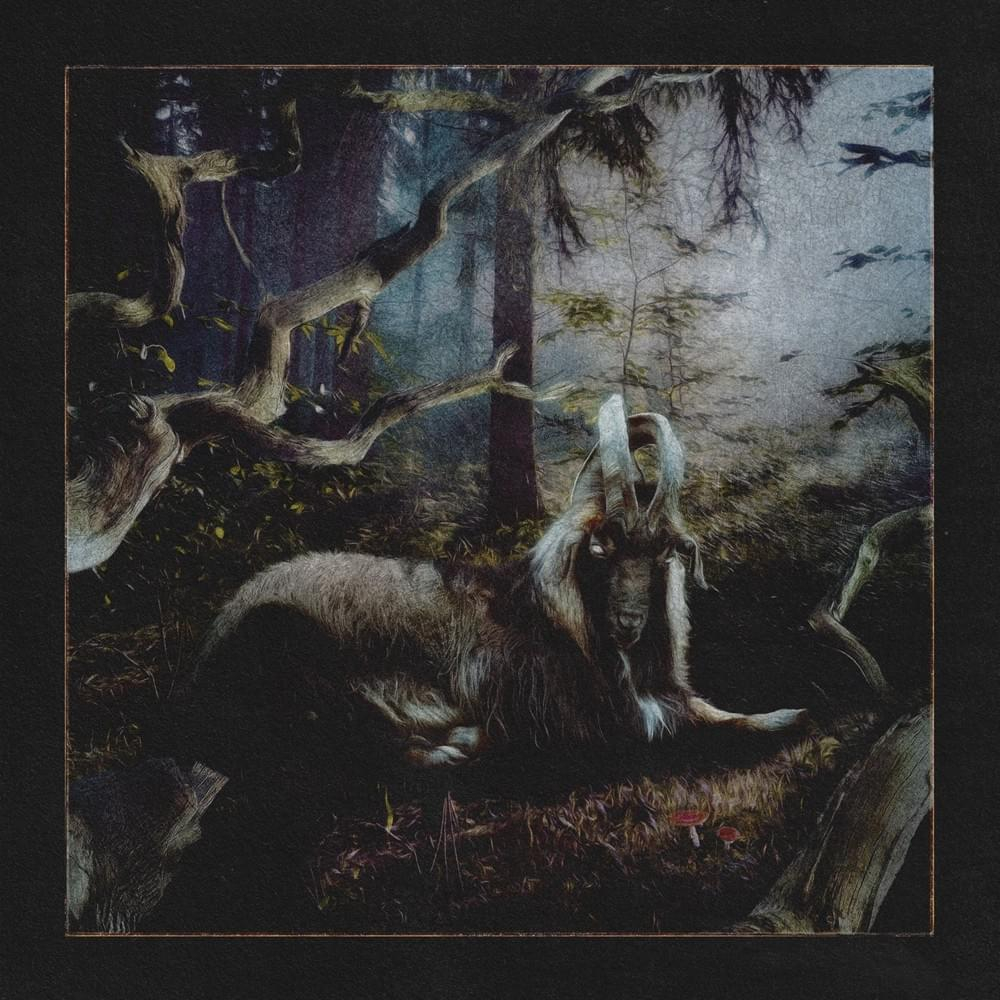

The original ‘Life is Strange’ was released episodically over the course of 2015. The game’s final decision stirred controversy among fans.
By Nicole Prieto | Staff Writer
Released Aug. 31, Life is Strange: Before the Storm marks the triumphant return of the series after its controversial Season 1 endings. The setting is May 2010, a little over three years before the events of the original. Chloe Price, 16, is at a low point in her life. Her ex-best friend, Max Caulfield, has been on an inexplicable communications hiatus. Her Blackwell Academy scholarship is standing on stilts. Her father has been dead for two years, and her mother’s new military boyfriend, David Madsen, is becoming obnoxiously chummy with their garage.
In the midst of feeling abandoned and alone, coupled with a dimming future, Chloe is finding it harder and harder to care about anything. That is, until she runs into the most popular girl at Blackwell in an unexpected place.
Colorado-based Deck Nine Games transforms a teenage angst-ridden premise into a contemplative story that chronicles Chloe’s meeting with Rachel Amber, unveiling one of the greatest untold stories from the first game. The team takes Dontnod Entertainment’s vision of Arcadia Bay and runs with it farther than its counterpart ever dared to go. With a five-star combination of smart writing, engaging visuals and heartfelt performances, Before the Storm is quickly making its name as 2017’s standout episodic series.
Standout Strengths
First and foremost, we finally learn more about Rachel as a person and not the hyped-up myth everyone in Life is Strange insisted she was. Yes, Rachel is pretty, smart, involved and well-liked by many students. But as many fans have suspected for years, she does not lead a perfect, pristine life, nor is she some manipulative, mastermind interloper. Deck Nine makes it clear that she is a teenager with personal problems outside of her control and a desperate need to be understood. They may have only just met, but it is no less obvious that Chloe is as important to Rachel’s life right now as she is to Chloe’s.
Notably, what that means depends on player’s choices, which matter. One major criticism from the first game was Dontnod’s frustrating habit of insisting that players interpret the nature of Chloe’s relationships with Rachel or Max. In contrast, Deck Nine literally and directly gives players the option to “Flirt” with Rachel early in the game, among other, subtler opportunities for Chloe to awkwardly hit on her as only a 16-year-old can. (Oh, and then there is new character Stephanie Gingrich. Enough said.)
This writer will not spoil the ending, which is mysterious and unexpected for other reasons, but let it be known that poor LGBT representation is one of the last things players should be worried about.
Relatedly, one of the game’s top features is the sensibility of its writing. If returning fans are not convinced by the unique options in Chloe’s “Backtalk” conversation, they should be enamored by what Before the Storm lacks: painful, off-center attempts at modern teen slang. Life is Strange is as notorious for its two endings as it is for its bizarre character dialogue. Take, for instance, iconic mashups, such as Victoria Chase’s threat to Max that she would post an unflattering photo of her “all over social medias” (yes, with an “s”), or Chloe angrily pointing out to Nathan Prescott that he has “hella cash.” (Or her liberal use of “hella” in general.) In an amusing callback to the first game, Deck Nine unexpectedly reveals the origin story of Chloe’s love for saying “hella.”
In the wake of the Screen Actors Guild and the American Federation of Television and Radio Artists strike, member voice actors have refused work for certain employers toward “any titles that went into production after February 17, 2015,” according to the union’s site. The strike affected the decision of Chloe’s original voice actress, Ashly Burch, not to reprise her role. Burch won Best Performance for voicing Chloe in the 2015 Golden Joystick Awards. She remains involved with the project, however, as a credited writer. This left some fans skeptical of Before the Storm, but rest assured, the voice acting is no less on par.
Rhianna DeVries gives a powerful performance as a 16-year-old Chloe. She infuses the character with her own brand of teenage rebellion and awkwardness and avoids simply mimicking Burch’s iconic rendition. Case in point, players should anticipate grabbing a box of tissues once they make it to the junkyard scene from the pre-release footage. There is a brief callback to one of Max’s junkyard observations in the first game — and the actual ending of the scene is guaranteed to tear your heart out and stomp on it with gusto.
Voice acting is, of course, not the only auditory standout in Before the Storm. With a musical score by English band Daughter, the indie-game vibes from Life is Strange are considerably ratcheted up. From “Numbers” in the official trailer to “Glass” and “Dreams of William,” Daughter’s music lends a somber atmosphere appropriate for the struggles Chloe and Rachel tackle.

While character interactions were lauded in the original release, the dialogue was panned for being, as Mitch Dyer of IGN put it, “laughable.”
Old Dog, New Tricks
Fans of Rockstar’s 2006 game Bully should find a (slightly) less destructive home in Deck Nine’s Before the Storm. A combination of her poor grades, casual truancy and rocky encounters with Principal Raymond Wells set the stage for Chloe’s inevitable expulsion from Blackwell. The game not only encourages but canonically demands that players get in some old-fashioned, teenage delinquency. This is certainly the opposite position of Max, who is far more cautious about getting into serious trouble (or at least, more cautious about getting caught). But even discomfited, law-abiding players should find comfort in Life is Strange features that receive a facelift in Before the Storm.
Like Max, Chloe keeps a journal that keeps pace with various player decisions over the course of the game. The premise for her diary is unique, however. Chloe is not just filing away her angry thoughts; she is writing a bunch of unsent letters to Max. Ouch. The devil is in the details, and Chloe’s personality is plastered all over her entries. From her handwriting to torn page edges, Chloe’s letters are less “hipster-scrapbook” and more “vent-with-a-vengeance.”
Players also get to score game achievements through graffiti collectibles, which take the place of Max’s photo ops. Props to Deck Nine for giving different tag options and for including an anti-frustration feature that abates the need to do full replays. For instance, you can choose to call David an intruder or something far less flattering that cannot be repeated in this review. But if you miss the window to do so, you can later hunt down the tag spot in Collector Mode. You can also use it as a chance to try out various dialogue trees without affecting your actual playthrough.
She may not be able to reverse time like Max, but Chloe’s in-game ability is even better: the power of a teenager’s running mouth, aka “Backtalk.” Chloe can dish out comebacks tailored to her opponent’s speech to get out of miserable situations.
Players need to keep on their toes, though, since slinging out choice insults requires quick reflexes and attention to detail. It is a fun way to keep players engaged that goes beyond holding down a button and cheating one’s way through awkward social situations. In this respect, the game also encourages the player to do a good deal of snooping before advancing events. Learning new information can unlock conversation chains that give depth to various side characters. Doing so also has the practical effect of giving Chloe an extra leg-up in some Backtalk scenarios.
Returners will also be treated to some interesting callbacks. In Chloe’s journal, there are subtle — albeit unintentional — time references when she writes about Max. Chloe observes her father’s Polaroid camera sitting untouched in the family garage, which becomes a critical prop in the first game. And whether you love her or hate her, seeing a younger Victoria is one heck of a whiplash experience. She is as pretty, rich and overachieving as ever, but her dialogue and comportment scream “popular wannabe” as she suffocates under Rachel’s shadow.
Themes
Deck Nine pays homage to good storytelling with several persistent themes and smart nods to other works throughout the game. Even the episode’s title itself is subtly referenced the moment Chloe wakes up in her bedroom. In the background, players can hear an announcement blaring from Chloe’s radio alarm that promotes Blackwell’s production of William Shakespeare’s The Tempest — which Rachel and Nathan star in. The released episode titles for Before the Storm — “Awake,” “Brave New World” and “Hell Is Empty” — are pulled directly from lines in the Bard’s play. Referencing Prospero’s conjured storm is, of course, entirely relevant to the time-twisted tornado from Season 1.
Before the Storm thankfully expands on artifacts from the first game that did not get a lot of love. Life is Strange had a bad habit of throwing in optional red herrings for players to discover that did not end up being explicitly relevant to the story (such as the Tobanga). It is part of what made its two only possible endings — neither of which invoked prior choices or optional discoveries — frustrating to accept.
The prequel, on the other hand, takes full advantage of player curiosity by using optional conversations and observations to expand on major themes in “Awake.” There is another Native American totem pole in Arcadia Bay similar to Blackwell’s Tobanga, which prominently features a raven. If the player observes it, Chloe is rewarded with a bit of history and an ominous sentence on its descriptive plaque: “The raven is to be respected, never trusted.” From trailers to in-game scenes to the bottom-right corner of the loading page, the raven is a prominent animal on the level of the doe or butterfly in the original game. For better or worse, it is clear it will serve as a guide for Chloe’s actions throughout Before the Storm.
Similarly, Episode 1 is packed with references to the element of fire, which bookends the first and final scenes of the episode. Chloe can choose to steal a “Firewalk” band T-shirt at The Mill; she can listen to Evan Harris’ fire-safety campaign; if Chloe chooses to participate, there is even a tabletop RPG campaign that features a boss with a bracer that negates fire-based attacks. There is no dearth of Deck Nine’s appreciation for heavy symbolism, and gamers with a compulsion to explore every corner of every scene will be richly rewarded.
The most significant overarching theme is, of course, loss. The death of Chloe’s father, William and Max’s absence dominate the game and, whether justified or not, motivate several of Chloe’s poor decisions. Chloe’s dreams are the most telling in this respect; like in Max’s nightmare from Life is Strange, players would do well to open up Chloe’s journals and text messages during her dream sequences for an extra punch to the gut.
Brave New World
Before the Storm’s first episode “Awake” is a powerful entry in the Life is Strange canon that should make fans optimistic about picking up the series once again. There is no word on the official release date for Episode 2, “Brave New World.” According to Game Informer, Deck Nine is aiming to release episodes roughly every two months — similar to the release schedule for the first game. If so, expect it to coincide with the two-year anniversary of the release of Life is Strange’s fifth episode, “Polarized.”
Before the Storm is currently available on Xbox One, PlayStation 4 and PC.



